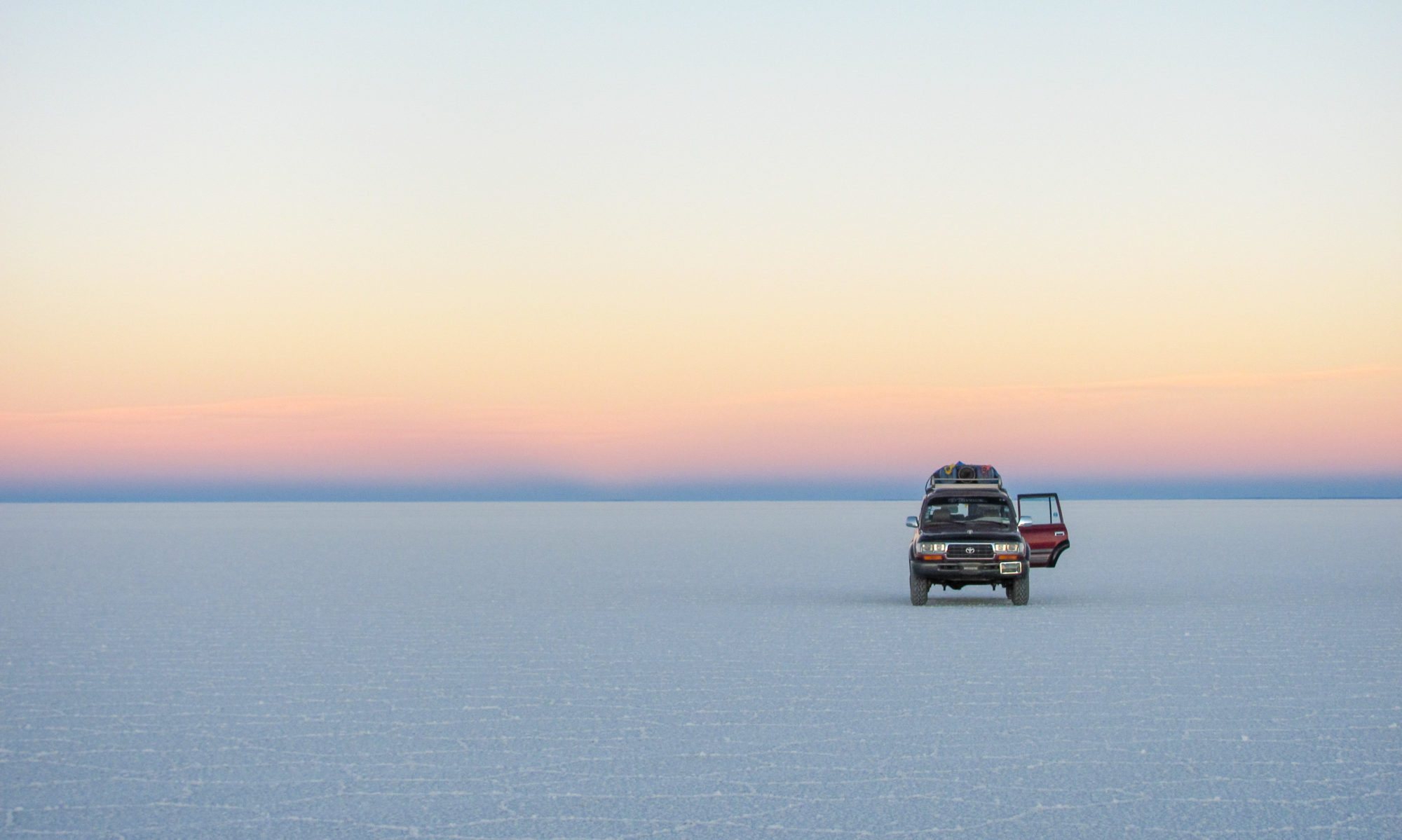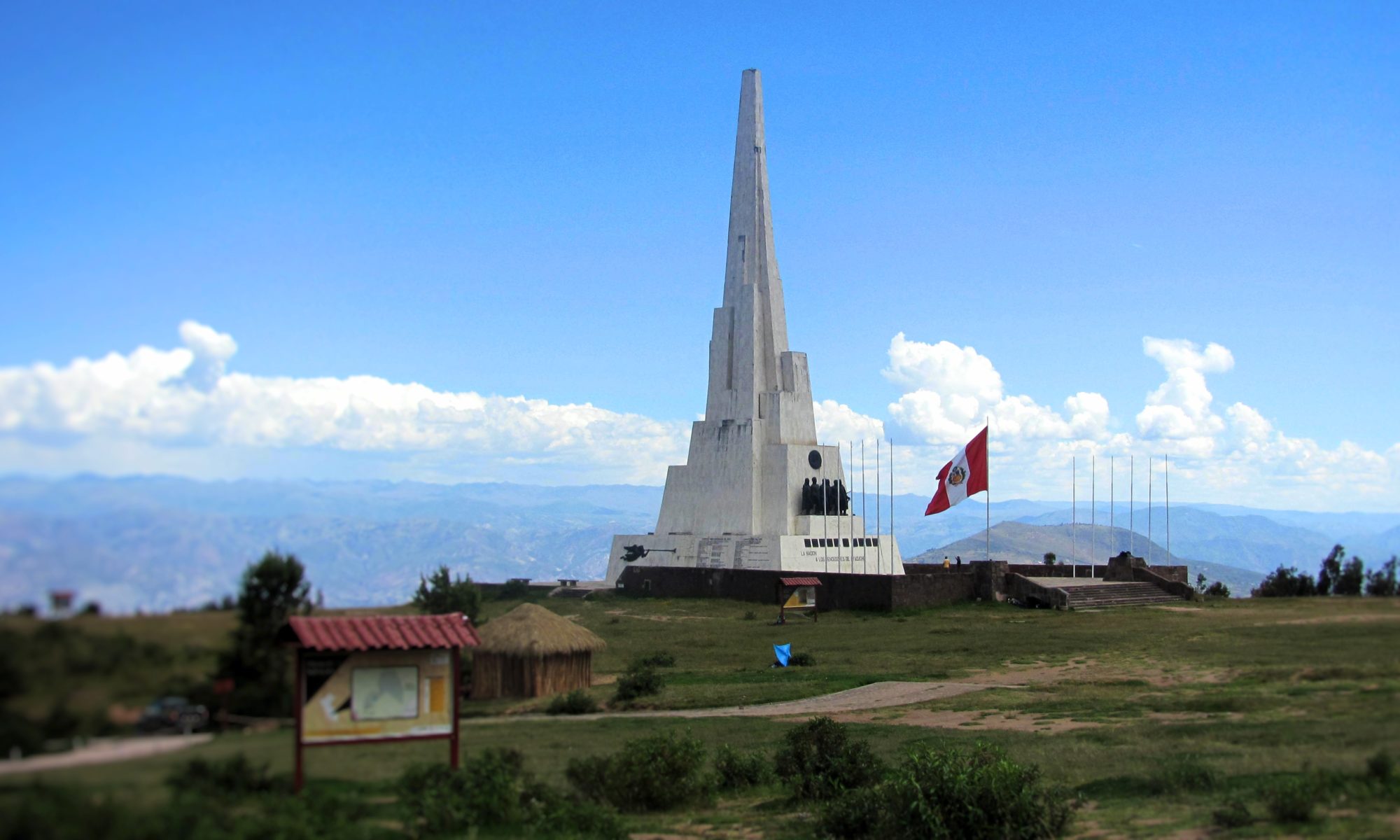Nestled between the mountainous peak of the Andes lies Ayacucho, one of the most traditional cities in Peru. Often skipped, but not rightfully so because if you want to taste the traditional Peruvian way of life, understand the tragic history of the ‘Shining Path’ and venture out into the Andes on horseback, Ayacucho is the way to go
– What to do in Ayacucho? –
So how to best spend your time in Ayacucho? Start your day with a traditional breakfast at Mercado ’12 de Abril’ in the city center of Ayacucho. You’ll find this market nearby the street ’28 de Julio’. When you enter the market, you enter the traditional life of the Peruvian people. Name it, and you will get it. Milk, meat, home-made cheese, fruits, breads, souvenirs and traditional clothes. But what you will not see at less traditional markets in the country is that they also sell guinea-pigs, donkey heads and goats (for eating!). The market also hosts one big smoothie-Walhalla where you can get the best and cheapest smoothies of Ayacucho. For 4 Soles you will have a 0,5 liter of smoothie of your favorite fruit! If you are more a bread person you really have to try the traditional Ayacuchana bread called: ‘Wawa’. It is sweet and goes for only 2 Soles. The best ‘Panaderia’ of Ayacucho can be found (street: 9 de Diciembre) nearby the plaza de Armas where they show you how they make their perfect breads.
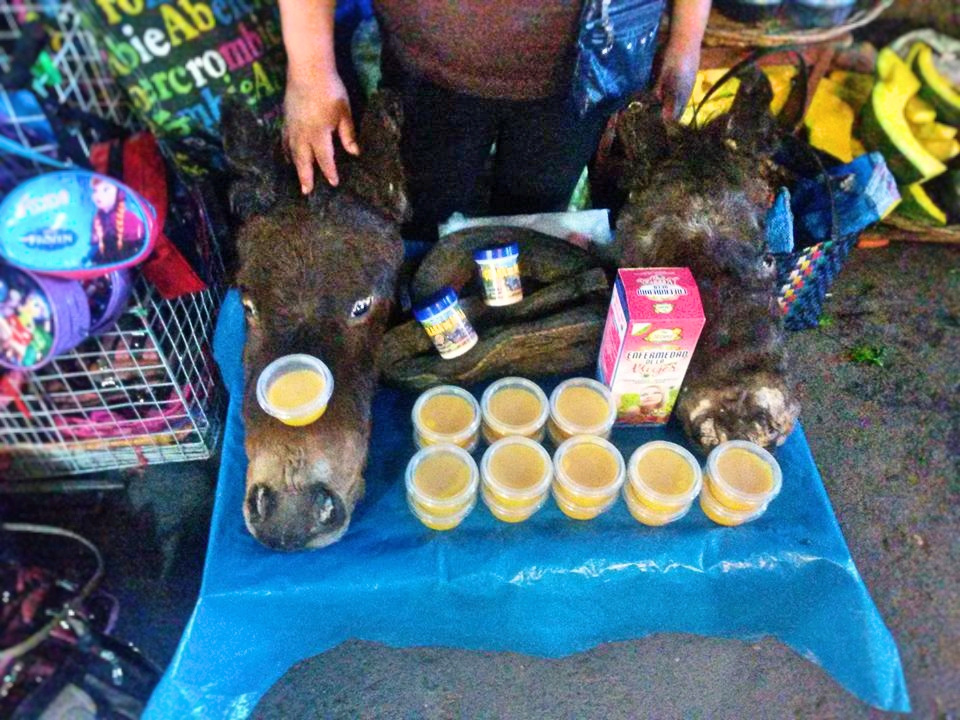
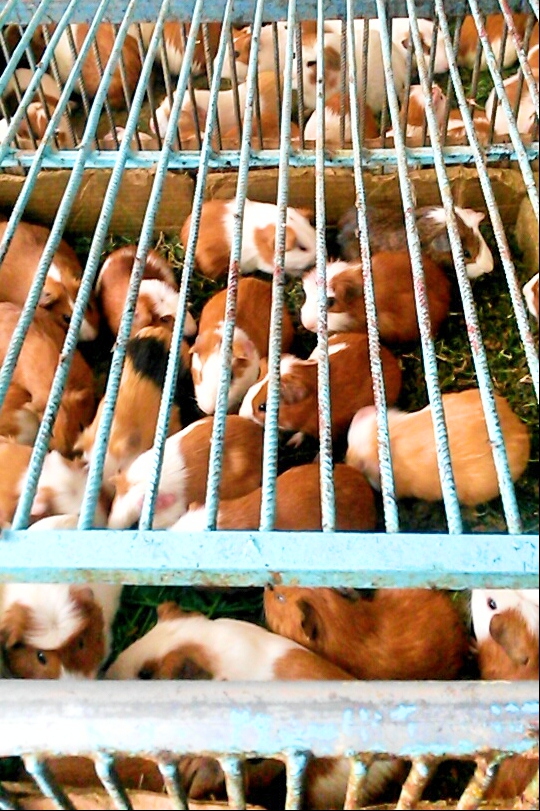
After breakfast it’s time to see something of the tragic history of Ayacucho. Ayacucho, in Quechua (Orginal language of Ayacucho), means ‘the city of the dead’. This stems from its tragic history. Ayacucho was the base of the Maoist-Marxist terrorist group ‘Shining path’. It formed the center of an internal conflict between terrorists and the government and extremely grave tactics were used to suppress each other. The Shining Path killed more than 30.000 people in an attempt to turn Peru into a cooperative farming society. During this conflict, everyone in Ayacucho lost at least one relative in the fight. There was no happiness and no emotions during this conflict. Because of that, the city was called: ‘The city of the dead’. The conflict only ended in 1999 and it took a long time for Ayacucho to recover. Nowadays some tourist still think that Ayacucho is dangerous, but Ayacucho has emerged from the past and is now a beautiful city with lots of Peruvian colonial architecture. El museo de La Memoria (street: Libertad 1365) gives a view into this conflict, is really interesting and worth it to visit!
After your visit to El museo de La memoria you really have to see one of the 33 churches of Ayacucho. One of the most beautiful cathedrals of Ayacucho is the ‘Basilica Cathedral de Ayacucho’. This Cathedral is based at plaza de Armas and is stunning, with many side altars, statues and sculpted walls which are beautifully decorated. Guides tours are offered, but you can walk by yourself as well. Templo de San Cristóbal (street: 28 de Julio), Inglesia y Convento de La Merced (street: Dos de Mayo) and Inglesia y Monasterio de Santa Clara are also interesting to visit.
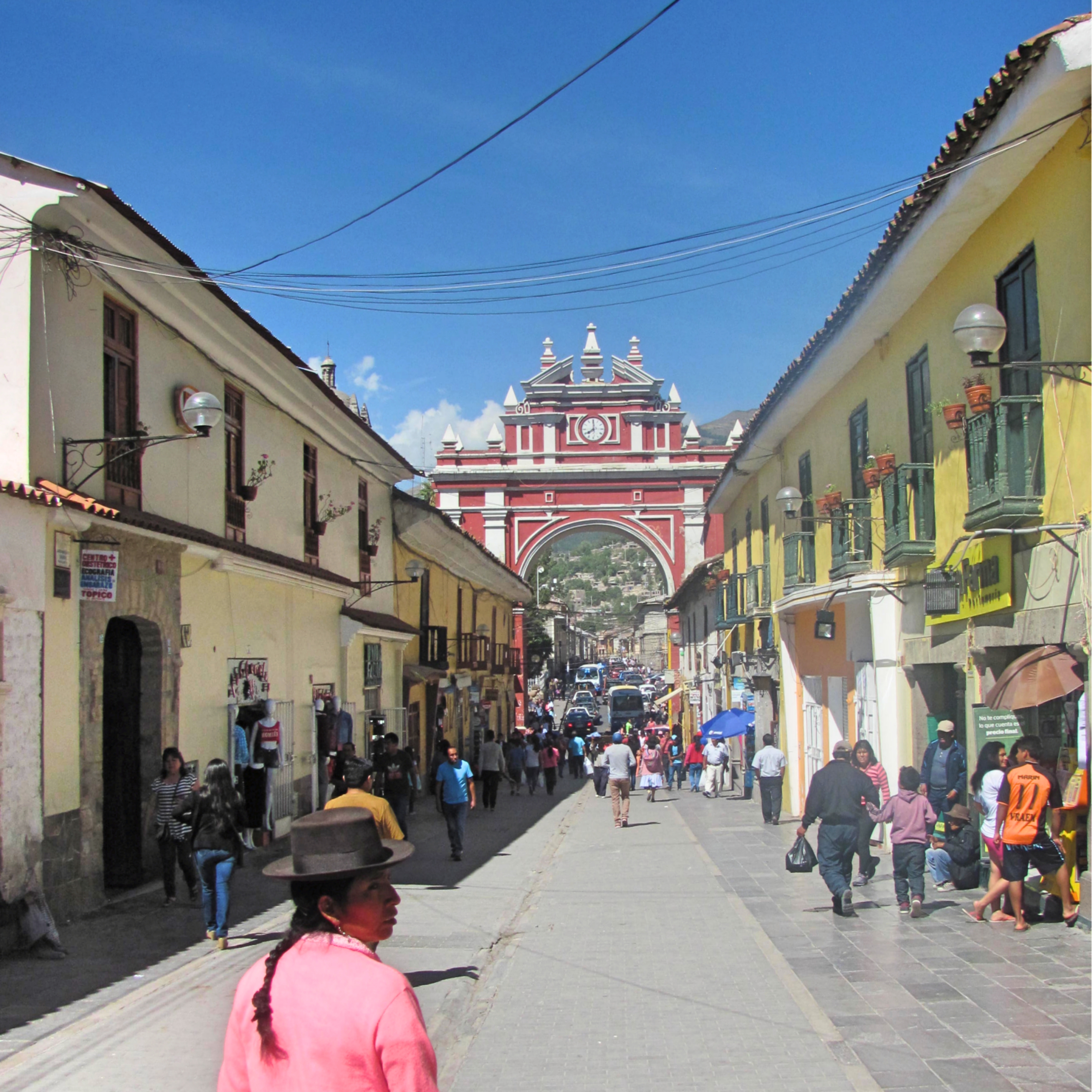
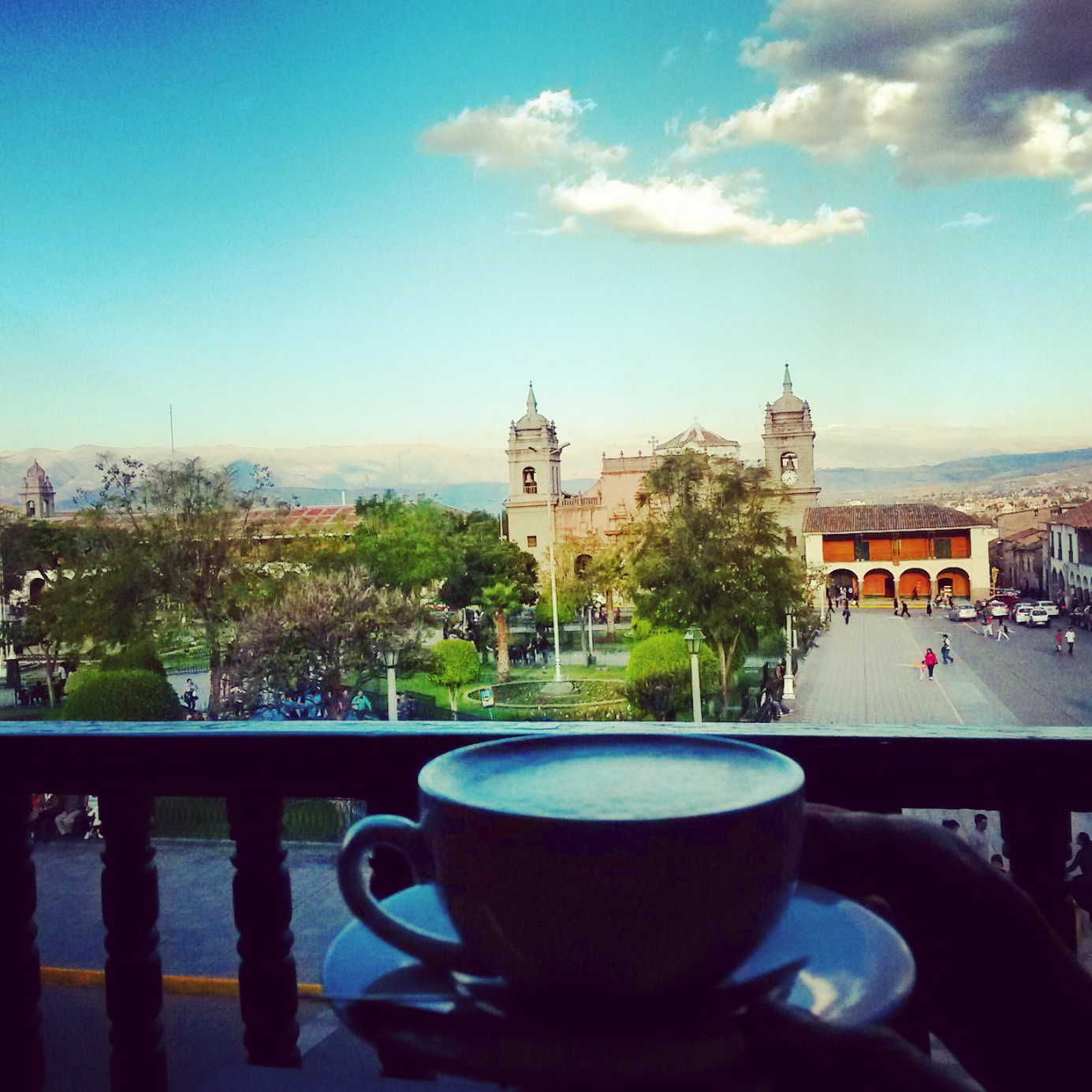
The Wari and Quinua
In Peru the Inca’s get most of the publicity but the history of ‘the Wari’ (another ethnic tribe that ruled parts of Central-America) is very interesting too. Visit the ‘Ruins of the Wari Culture’ and ‘Museo de Sitio Wari’. The city of Wari is only 20 km. from Ayacucho in the direction of Quinua. You can go there by taking the bus to Quinua for only 5 Soles, and make clear you want t get off in Wari. You can catch the bus at the street: Ciro Alegría. There are many Collectivo’s (shared mini-vans) that bring you to the ‘Ruins of the Wari Culture’ for 5 Soles.
Museo de Sitio Wari
At ‘Museo de Sitio Wari’ they charge only 6 Soles to enter the museum and they show you the beginning of Wari culture that was dominant over a very large geographical area in Peru and Bolivia. Apart from the culture, the area itself is also wonderful. The first thing you see when you arrive is the beautiful Sierra central, with its green trees and Cacti. When it’s the right season (January till March) you can pick the fruits from the Cacti, they are delicious and sweet! They also sell these fruits at the market, ask for ‘Tuna’.
Quinua
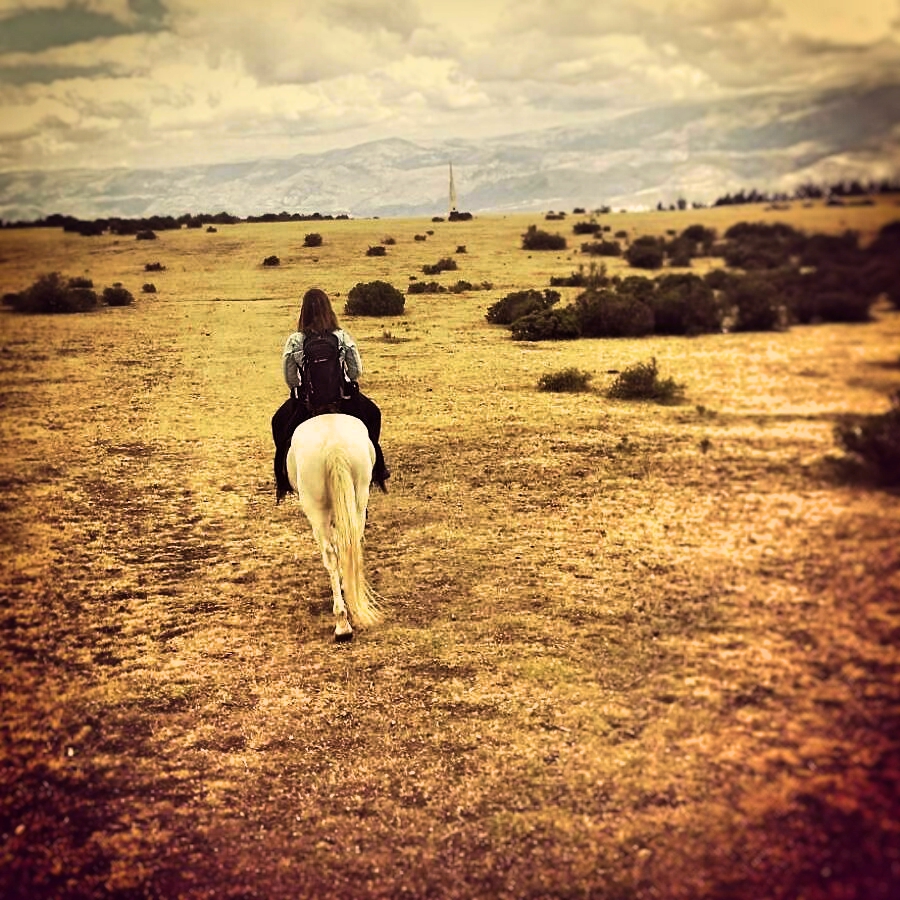
Also Quinua itself is worth a visit and the bus is only 5 Soles and departs from the same street as the busses to Wari. Quinua is famous for its artisans, ceramics and ‘la pampa de la Quinua’, where in 1824 South America finally won its independence from Spain. At ‘la pampa de la Quinua’ you can also do some horse riding for only 10 Soles (short ride) or 15 Soles (long ride). You definitely have to go for the long ride. This ride is really spectacular. The area is beautiful and you will see different waterfalls.
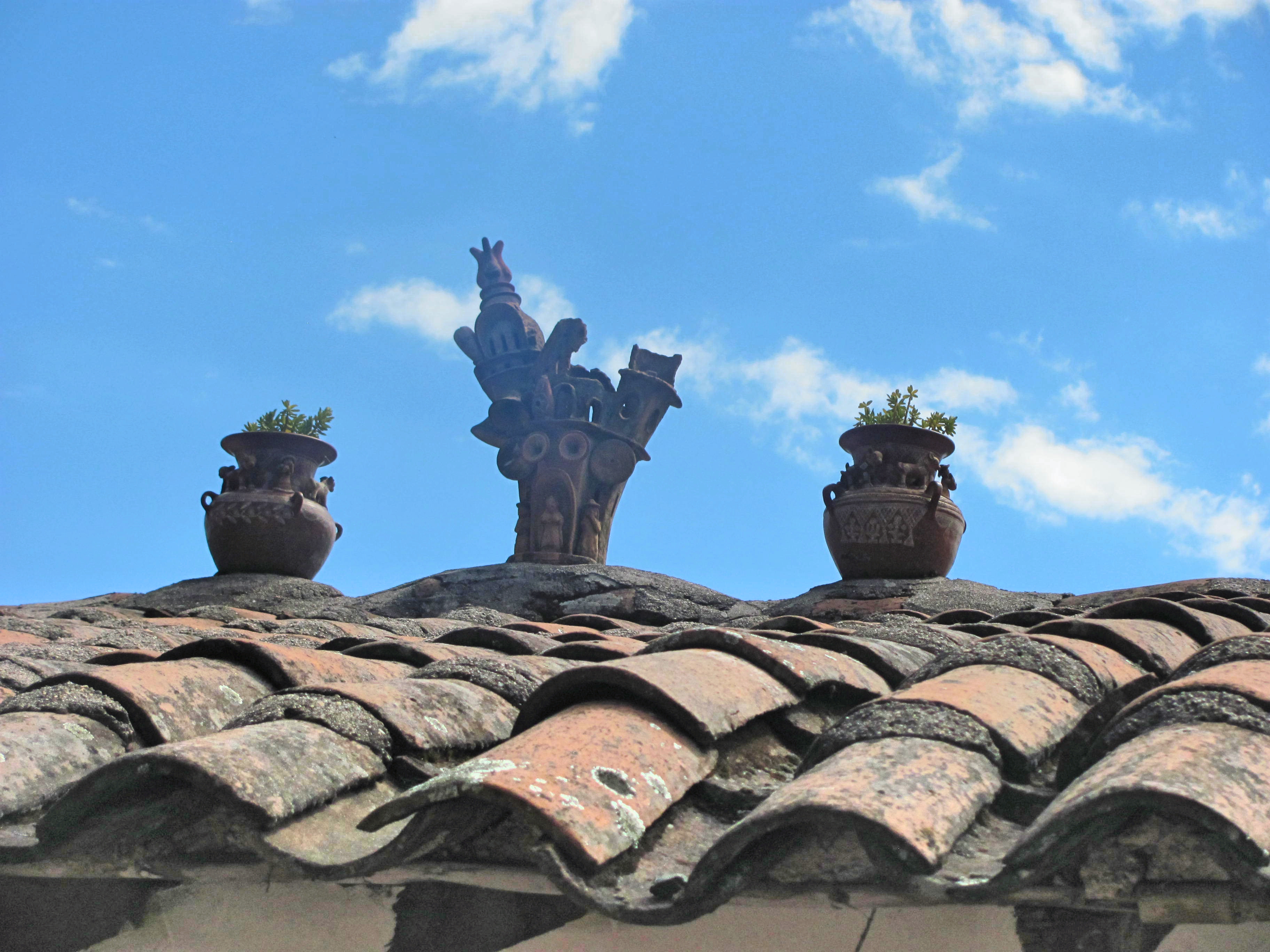
Holy week: Semana Santa!
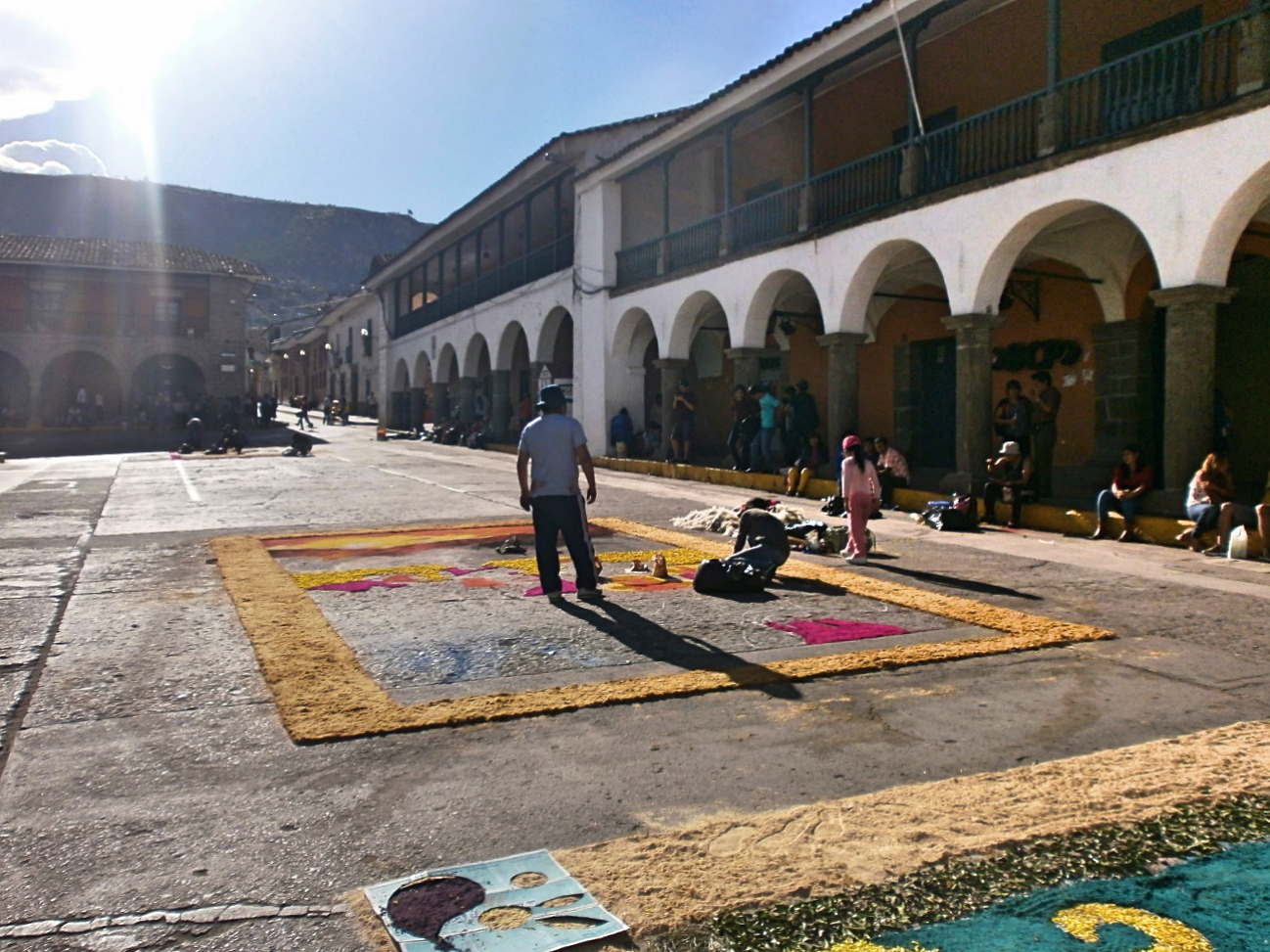
Ayacucho is recognised for the best and biggest Semana Santa party’s in the entire country. Every year ten-thousands of visitors visit the Catholic festivities. The citizens make flower carpets all over the streets and there are a lot of party’s, concerts, folk dancing and fireworks. During this week there are also bull chases, so be careful! The bulls are really aggressive. There are also a lot of processions and religious ceremony’s which are really impressive. Be wise, keep a hand on your wallet, this is the busiest week of the year with a lot of pick-pockets!
Activities around Ayacucho
You can do a lot of trips around Ayacucho. Helí Aristóteles Esmeralda Tours Huanta offers the best guides and the cheapest tours. You can contact them on facebook or Whatsapp (988535058 or 991379496). They offer different hiking tours but also rafting and other adventurous tours! I recommend the Huancaraylla hiking tour which is really amazing because of the blue rivers and the amazing nature.
– Eating & Sleeping –
Cheap eats
The food in Ayacucho is really traditional and cheap. Peruvian people eat a lot of corn, meat and rice. They are big eaters and the sizes they serve in restaurants are a challenge, even for a large eater. For only 5 Soles you can get a 3 meal menu at ‘Mercado 12 de Abril’ nearby Plaza de Armas. You can get traditional meals like ‘Puca Picante’ which contains rice, meat and potatoes. It’s tasty but be careful for infected food on hot days. They prepare it on a busy hot market without fridges.
Good restaurants in Ayacucho
If you like to eat fish only eat this on Saturday and Sunday because the delivery of fish is on Saturday. If you want to make sure you will not get sick during your trip you can also get a 3 meal menu for 12 Soles (only 12-14 PM) at restaurant ‘Via-via’ at plaza de Armas. This restaurant has Belgian owners and has delicious Western and Peruvian dishes. They also sell a lot of special beers and cocktails. You really have to try the ‘Pisco Sour’! Also ‘Sukre’ and ‘Restaurant Mestizo’ are really good places for good food en drinks. They also offer you a wonderful view on Plaza de Armas.
Eating Cuy
If you want to try the famous Peruvian ‘Cuy’ (Guinea pig) you really have to try this in Quinua. In city’s like Cusco or Arequipa they put you off but at the market in Quinua they offer ‘Cuy’ for only 5 Soles, which is a really good price to try.
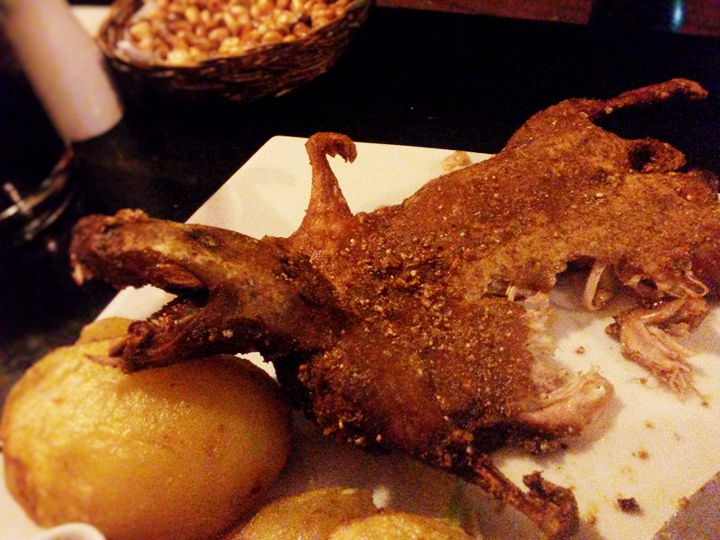
Best places to sleep in Ayacucho
We found out that Booking.com will consistently give you the best rates on hotels. To make finding the perfect spot a little easier we made a selection for Ayacucho. Click the link below to find the best places to stay in Ayacucho. If you are looking for value for money that can’t be found on any booking website: Check out Hostal ’Luna Azul’ (Jiron Sol 381). It has small rooms but good beds and a clean bathroom. And it’s dirt cheap.
– Practical Information –
When to visit
Climate-wise, Ayacucho can be visited throughout the year. It receives minimal rainfall and a lot of sun. Since it is situated in the Andes at 2600 meters above sea level day-temperatures are pleasant with averages highs around 25 degrees Celcius but the the temperature plummits after sun-down and nights in winter can be quite cold.
The best time to visit is between March and September. Not because of the weather but because it is here where they celebrate the largest Easter celebrations during ‘Semana Santa‘ (Holy week)! In this week, the city transforms into a big party place with a lot of festivities and impressive traditional processions!
In, out & around
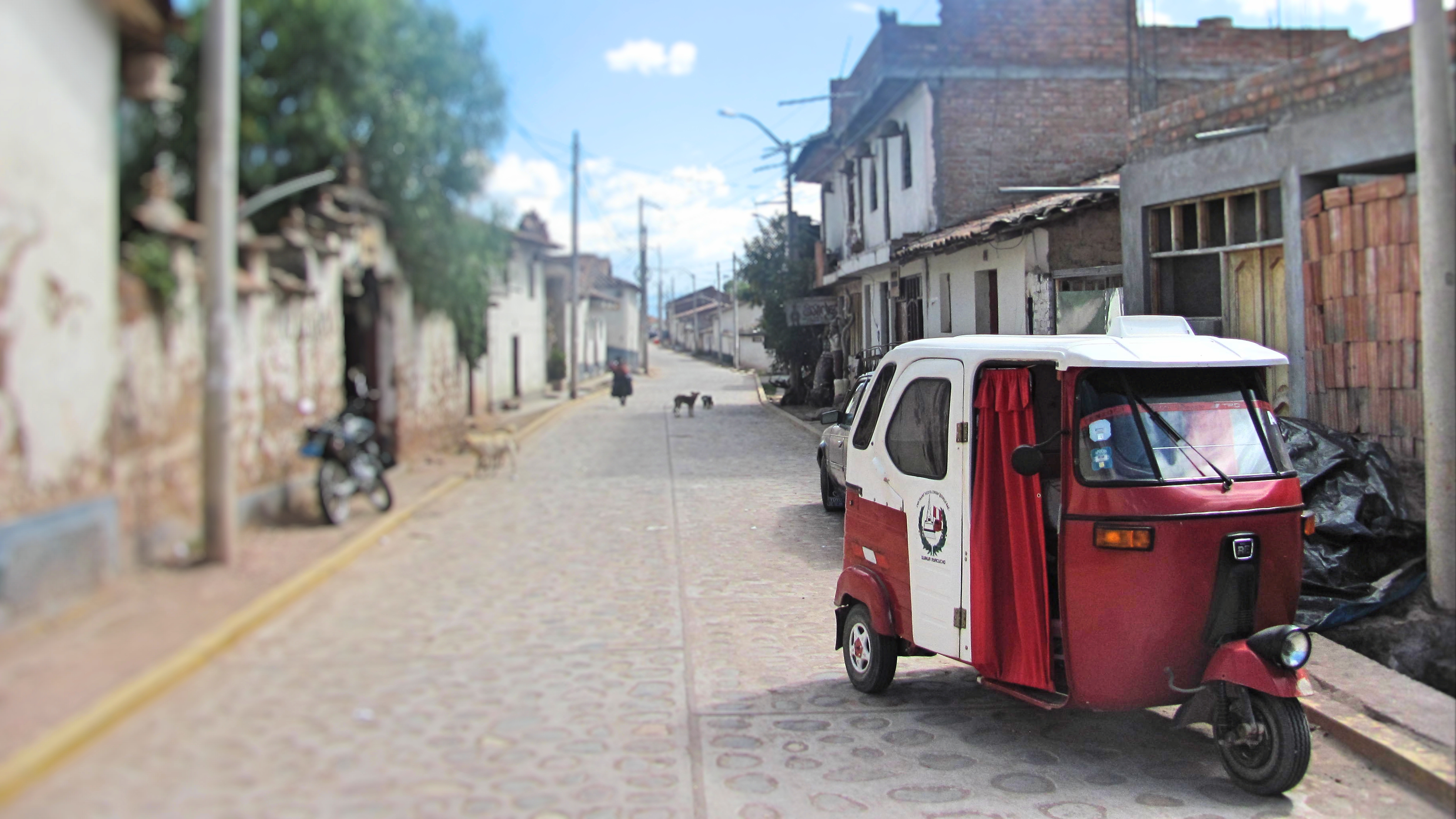
Ayacucho has an airport and a bus-terminal. (Terminal- Civa). You can go there by taxi for 5 soles (bus-terminal) and 8 soles (Airport). There are als mini busses (Rutas) to go there but there is no bus schedule so you better go by taxi. The taxi’s in Ayacucho have different colors and there is no taxi-sign on it. Take care of your belongings and never pay more than 5 soles for a taxi in the city center of Ayacucho. There are also ‘moto’s’ in Ayacucho. It’s a tuk-tuk and it’s cheaper than a taxi. For only 3 soles they can give you a ride to the bus terminal but they don’t drive to the airport.
– Things to take when traveling to Peru –
There are a few items that I would pop into my bag for a trip to Peru. Firstly, always take many layers of clothing with you. Being in the Andres means that the weather switches rapidly. Be prepared for both sunshine and rain. But more importantly, be prepared for rapid switches in temperature. Thermals and swimming shorts in the same daypack? In Peru its not as weird as it sounds.
Fjallraven trapper hat
Even in the coldest nights on the altiplano you won’t get cold ears while wearing this trapper hat. It’s simply not possible. The big advantage of trapper hats compared to beanies is that they warm up your whole head instead of just the top and they fit tightly around your head, meaning you wont lose it while mountaineering in the Andes. Fjallraven Kanken is a Swedish premium brand that uses sustainable materials. Also their products just look damn good. It’s a little investment, but one that’s worth it.
Thermals
Besides wearing a warm hat or beanie, the best addition to your travel wardrobe is skintight thermal underwear. Super comfy, light, small to pack and it transforms any normal pants into super warm isolated pants. I value thermal underwear over a thermal shirt because to warm up your upper body you can simply stack all the shirts you are carrying on top of each other while stacking multiple pants is harder. Also your legs are not used to this added layer so wearing thermals will work wonders on the ‘feel temperature’. LAPASA thermals are designed for travel and come in at a very good price.
Power bank
The usefulness of a power bank is self-explanatory. Being able to charge your phone, tablet, camera, GoPro or e-reader on the go has made traveling so much easier. I use this particular power bank over a year now and its just perfect. The 20,000mAh provides my IPhone with about 5 charges, the double port means I can charge my camera and phone at the same time (or be a life saver for the person sitting next to me) and the LED torch in the middle is super useful when you try to find something in your bag on the bus in the middle of the night. The display is useful as well and tells you a whole lot more about the current charge compared to ‘3 out of 5 lights left’. Oh and it comes in at HALF THE PRICE of a Anker power bank. I have yet to find its flaws.
Lonely Planet
Because its just the best compact travel guide out there. I always take a lonely planet with me for its practical information, background on certain sights and for when I find myself unexpectedly off the beaten path in search of accommodation for the night. For me this is still the best way to read up on a destinations in long haul bus rides. You don’t need internet or battery-life which even on a luxurious bus in Peru can really come in handy sometimes;)
